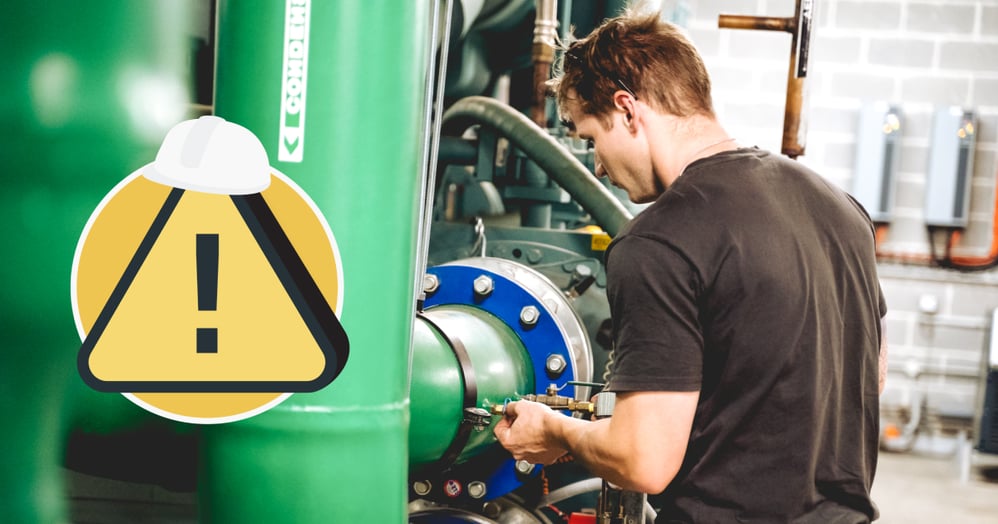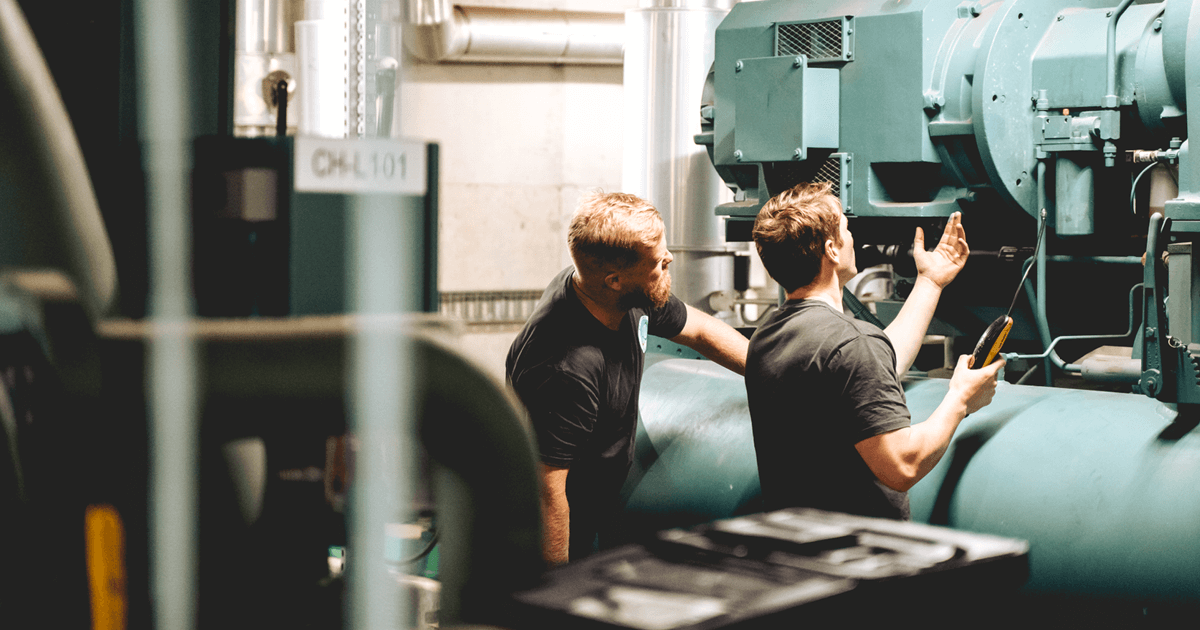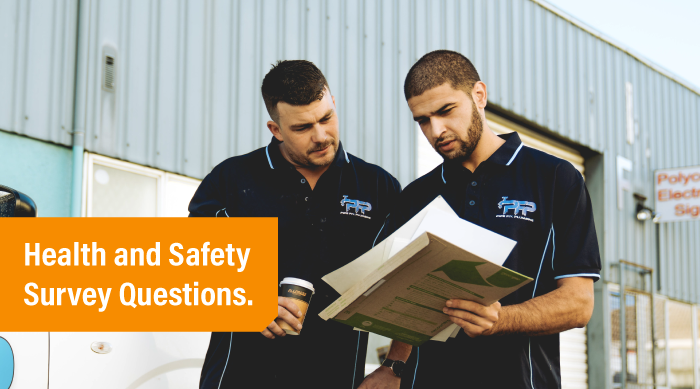Managing Health and Safety Risks - A Guide for Tradespeople
by Team Tradify, June 1, 2021

Table of Contents
Tradespeople are exposed to health and safety risks at work every day. Statistically, trades are some of the most dangerous workplaces around. In the UK, it’s reported that almost 3% of plumbers experience problems with their respiratory health and skin diseases. In Australia, more than 2800 people have died in the last ten years in the construction industry according to SafeWork. And in New Zealand, there were 4 fatalities in electricity, gas, water and waste services between March 2020 and May 2021.
The most effective way to manage risk in the workplace is to get everyone involved in proactive health & safety. To make things easier for you, we've put together a one-page H&S survey that you can get your team to fill out. Find out how effective your current H&S processes are — or if there are gaps that need filling.
Note that health & safety policy requirements may differ by industry and region. Make sure you look into your individual obligations in order to remain compliant and consult a lawyer for legal advice.
- Health and Safety Requirements in the UK
- Health and Safety Requirements in Australia
- Health and Safety Requirements in New Zealand
Jump ahead:
- 1. Health and safety risks and hazards for tradespeople
- 2. Managing risks in the workplace
- 3. Useful tools and resources for navigating work health and safety
1. Health and safety risks and hazards for tradespeople
Health and safety risks for tradespeople are high, which means mitigating risks should be a top priority for trade business owners. Below we look at some common risks in the trades. Think about how you can improve your health and safety procedures to remain compliant and keep you and your staff safe.
Falling from height
In the last three years, 47% of UK work-related incidents recorded involved falling from a height. In Australia, the same issue accounts for 58% of construction fatalities. Most of these incidents are falls from ladders – in New Zealand, 40% of high falls are from ladders and stepladders, and a further 16% are from roofs. Other falls recorded are from buildings and other structures, scaffolding, trucks, cranes, towers, drilling rigs, balconies, elevated work platforms, semi-trailers or lorries.
Falls, trips or slips
A large number of workplace injuries in construction are from falls, trips or slips down steps, over equipment – even holes in the ground. Worksite clutter also creates a huge risk for this kind of fall – it’s can be easily prevented if you’re careful.
Body stressors
Body stressors are one of the most common health and safety risks for construction workers across the globe. They’re typically caused by handling, carrying or lifting heavy objects – something tradies do a lot every day –resulting in neck, back and shoulder injuries. In Australia, body stressors in construction account for on average 37% of workplace injuries.
Hit by moving objects
Being struck by moving, flying or falling objects, such as large pipes, windows, metal plates or even tools, accounts for 24% of construction workplace injuries in Australia. In New Zealand, there have been five fatalities from tradies being hit by falling objects in the last year alone. Wearing protective gear at all times on-site is crucial – this simple step could save your life.
Vehicle incidents
Many fatalities in construction are caused by vehicle incidents, including workers being hit by a vehicle. In the UK, 7 construction workers die on-site each year as a result of vehicle accidents, and 93 are seriously injured. In New Zealand, vehicle-related accidents are the main cause of fatalities in the construction industry. They accounted for 48% of all fatal construction accidents in 2014.
Loss of hearing
The long-term effects of exposure to loud noises can be far-reaching. Construction workers experience noise levels up to six times the legal exposure limit – and most suffer from tinnitus or permanent hearing loss because of it. You can manage this risk by wearing protective equipment like ear-muffs or plugs – and act quickly if you notice any early signs of hearing loss. Turning the TV up louder than normal could be an early indicator of a hearing issue.
Electric shocks
If you’re a sparkie, there’s not a lot you can do about being exposed to electricity daily, but there is a lot you can do to prevent electrical danger. The most common hazard is an electric shock or being burned from exposure to live parts. In the UK, contact with electricity or electrical discharge made up 4% of construction injuries over the last three years. While this is lower than other health and safety risks, it’s still a significant problem – and one that can be fatal if not taken seriously.
Chemical exposure
Being exposed to harsh substances such as strong cleaning chemicals, sealants and adhesives can be detrimental to your health. You may be affected immediately and notice dizziness, headaches or nausea. In some cases, chemical exposure can affect you long-term and cause serious issues like occupational cancers. HSE points out that substances such as cement can also lead to burns or skin problems like dermatitis.
Fire
Tradespeople who use heat tools like blowtorches or welding equipment are often exposed to an increased fire risk. In Australia, where the climate is dry, fire risk is even higher. To minimise it, always carry out a risk assessment when using equipment that poses a higher fire danger, and follow government guidelines on restrictions during warm and dry months.
Asbestos-related illnesses
According to HSE, asbestos kills around 20 tradespeople every week because of past exposure. Breathing air that contains asbestos or asbestos-containing material is a major health risk – it’s a proven human carcinogen (causes cancer). Many older homes still contain the material, so an asbestos management plan is critical to minimise risk.
Hand Arm Vibration Syndrome (HAVS)
HAVS is a risk to anyone who regularly uses hand-held or hand-guided power tools and machines for as little as twenty minutes a day. Tingling and numbness in the fingers, loss of strength in your hands, or white then red tips of the fingers when they’re wet can all be indicators of HAVS.
Stress, depression, anxiety
HSE UK points out that there were an estimated 21,000 work-related cases of stress, depression or anxiety in construction in 2020. Although this number is significantly lower than other industries, it could be minimised greatly. Look after your mental health by taking regular breaks, and if you’re a business owner, always be aware of your employees’ mental health.
Prevention is the key to fewer injuries and incidents.

2. Managing risks in the workplace
Know your responsibilities
As a trade business owner, you’re legally responsible for ensuring the health and safety of your team while they’re at work. For more information, refer to our other blogs:
- Health and Safety Requirements in the UK
- Health and Safety Requirements in Australia
- Health and Safety Requirements in New Zealand
Be prepared
Undertake regular risk assessments and have emergency plans in place so that if the worst happens, you can act quickly. You’re legally obliged to inform your government or state body that manages work health and safety, so it’s vital you’re clued up on exactly what to do.
Look after yourself
The most important tool you have as a tradie is your health. Without it, you can’t do your job. Make sure you take regular breaks, always use the necessary safety equipment for your job and avoid exposure to dangerous chemicals or substances where you can. Don’t forget to manage your stress to minimise overwork and burn-out. Check your employees’ mental health regularly too – and ask how you can help them stay safer in the workplace.
Check out this podcast episode with Ed from TradeMutt, an Australian workwear brand providing professional mental health support to tradies, truckies, and blue-collar workers.
Work with a professional
Alternatively, contact a professional health and safety expert who can get you up to speed, point out any gaps and help you create a health and safety plan that has everything covered.
Know the risks, then stay safe
Unfortunately, working as a tradie involves health and safety risks. The good news is, with attention and preparedness, most of the risks can be significantly reduced. Follow these guidelines to stay safe on-site and protect your staff and your business too.
3. Useful tools and resources for navigating work health and safety
United Kingdom
- Health and Safety Executive
- The Work at Height Regulations 2005
- The Health & Safety at Work Act 1974 (HSWA)
- Electricity at Work Regulations 1989
- The Provision and Use of Work Equipment Regulations 1992 (PUWER)
- Control of Substances Hazardous to Health Regulations 2002 (COSHH)
- Gas Safety (Installation and Use) Regulations 1994 (GSIUR)
Australia
- SafeWork Australia
- The Australian Institute of Health & Safety (AIHS)
- National Code of Practice for the Prevention of Falls in General Construction
- Working at Height Association
New Zealand
- WorkSafe New Zealand
- Health and Safety at Work Act 2015 (HSWA)
- Hazardous Substances and New Organisms Act 1996
- The Electricity Act 1992
- Best practice guidelines for working from height in New Zealand
Tradify is a job management app made for tradies, by tradies. Pop over to one of our live walkthrough webinars to see the app in action, or start your free 14-day trial today.
Find out how your staff feel about health & safety by downloading our free Health & Safety Survey Questions!
Related articles

How To Keep Your Trade Business Running When You’re on Holiday

5 Great Gift Ideas For Tradies

Best Work Socks for Trades & Service Workers
Give Tradify a go for free!
Save 10+ hours/week on business admin with the highest-rated job management software for tradespeople.
With free one-on-one training and phone support, it's never been easier to get started.



